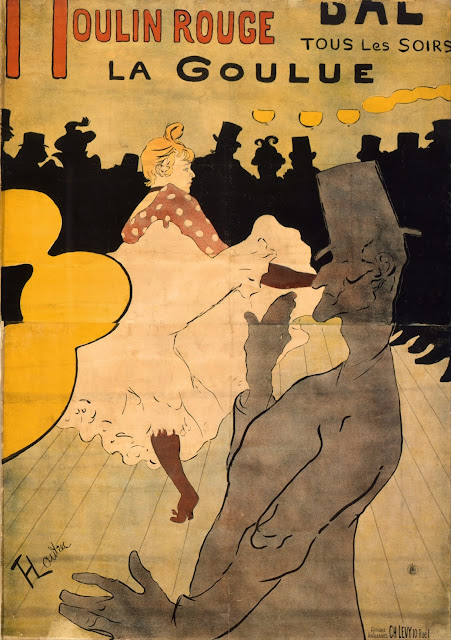Now as far as "main stream artists" go, Jackson Pollock is the Kurt Cobain. Jackson Pollock is known for his Abstract Expressionist paintings, but he is also known for his trouble with alcoholism that led to his death. Throughout my art career I've obviously known about Pollock and his paintings but I've never researched into his life to actually learn about him as I have with many other artists. This might be because people who know practically nothing about art claim to love Jackson Pollock and his art when they know nothing behind it. So let's all learn about Jackson Pollock today and actually try to understand his methods and style, since it is his birthday after all.
.jpg) |
| Jackson Pollock, Male and Female, paint on canvas, 1942, Philadelphia Museum of Art. This piece is one of Pollock's early works where he first began to pour paint on the canvas. | |
|
Jackson Pollock's technique is his biggest legacy. His paintings are mainly created with household paints instead of artist paints which he claimed as "a natural growth out of need." To create his "drip" technique he used hardened brushes, sticks and basting syringes along with pouring to actively paint from all directions. In a 1956 Time Magazine Pollock answers all of the questions of why he is an idolized and revolutionary Expressionist painter:
"My painting does not come from the easel. I prefer to tack the unstretched canvas to the hard wall or the floor. I need the resistance of a hard surface. On the floor I am more at ease. I feel nearer, more part of the painting, since this way I can walk around it, work from the four sides and literally be in the painting."
"I continue to get further away from the usual painter's tools such as easel, palette, brushes, etc. I prefer sticks, trowels, knives and dripping fluid paint or a heavy impast with sand, broken glass or other foreign matter added."
"When I am in my painting, I'm not aware of what I'm doing. It is only after a sort of 'get acquainted' period that I see what I have been about. I have no fear of making changes, destroying the image, etc., because the painting has a life of its own. I try to let it come through. It is only when I lose contact with the painting that the result is a mess. Otherwise there is pure harmony, an easy give and take, and the painting comes out well."
You can even find cigarette butts and dirt in the paint of his paintings if you look closely enough. He took his techniques from American Indian sandpainting and Mexican muralists and Surrealist automatism.
 |
| Jackson Pollock, Number 5, paint on canvas, 1948 |
 |
| Jackson Pollock, Number 29, paint on glass, 1950, National Gallery of Canada |
The "Drip period" was between 1947 and 1950 which was when he really became well known and was considered the greatest living painter in the United States. Right then was when he abandoned his drip technique and went back to his former styles. He was is high demand from collectors and galleries and in response his alcoholism deepened and he took a break from painting. A few years later on August 11th 1956 Pollock died in a single car crash in his convertible while driving under the influence of alcohol. He died along with Edith Metzger but Ruth Kligman, fellow artist and Pollock's mistress survived. He left behind his wife and artist Lee Krasner.
There is so much more about Jackson Pollock that you'd have to research for years to know. This is only a tiny glimpse at his life and his work. If you wish to learn more
check out this bio on him. But if you are really curious and want to learn more, which I highly suggest, then go and find documentaries and books and really learn about him as a person.
References:
https://en.wikipedia.org/wiki/Jackson_Pollock









%2C_oil_on_canvas%2C_65.1_x_80.6_cm%2C_Minneapolis_Institute_of_Arts.jpg)

%2C_oil_on_canvas%2C_71.1_x_55.9_cm%2C_Tate_Modern%2C_London.jpg)





.jpg)





















.jpg)














